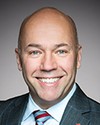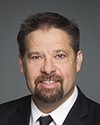One thing we're working on with our health authority partners is increasing the amount of communication. We have been very limited. I won't go through the technicalities, but between a public system and a private system, with regard to privacy legislation, it gets very complex. Often community health services, even if there is a mental wellness worker in the community, aren't informed that somebody in the community has gone to the hospital, is suicidal. No discharge abstract gets sent to the community with follow up that says this person has an appointment on Tuesday afternoon, can you make sure they get there and they have a family member with them, or provide them transportation? That whole piece is missing.
One thing we have to do is make sure there is a continuity of service between what we support at the community level and what's supported in the acute care system, and that those blend to support the individual so they don't fall into those gaps in between. Then if things aren't going well in the community, they have a way to go back to the acute care system, requiring a higher level of support.



